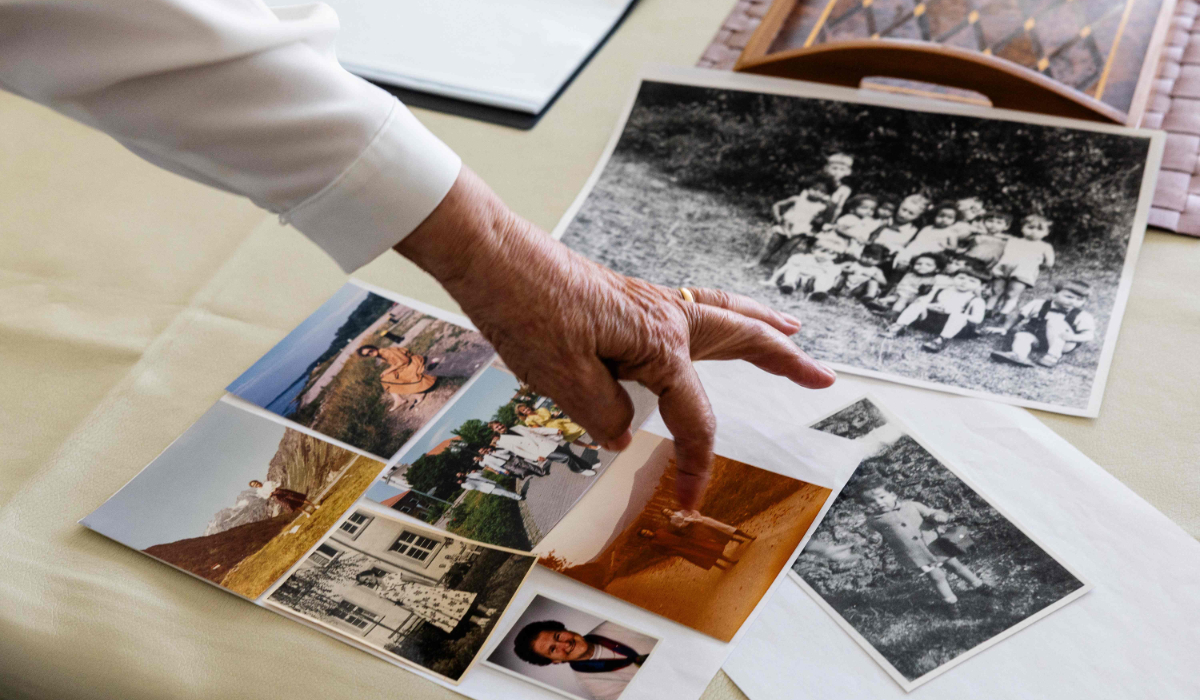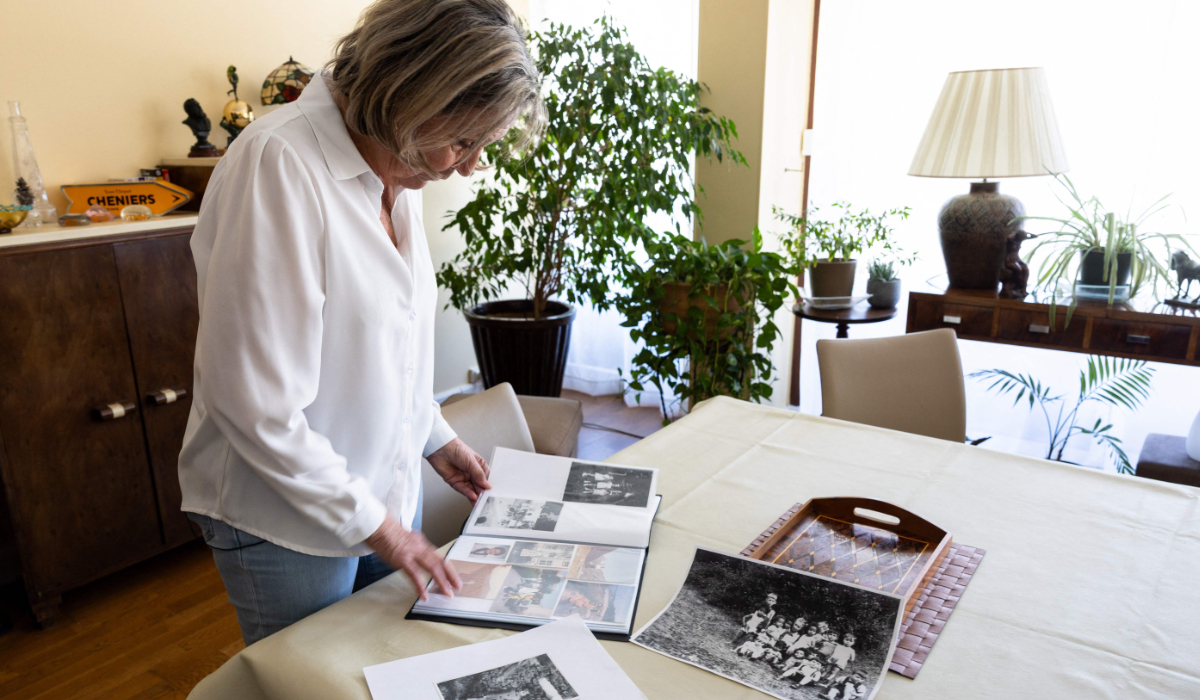CAIRO: Scientists have discovered the 43-million-year-old fossil of a previously unknown amphibious four-legged whale species in Egypt that helps trace the transition of whales from land to sea.
The newly discovered whale belongs to the Protocetidae, a group of extinct whales that falls in the middle of that transition, the Egyptian-led team of researchers said in a statement.
Its fossil was unearthed from middle Eocene rocks in the Fayum Depression in Egypt’s Western Desert — an area once covered by sea that has provided a rich seam of discoveries showing the evolution of whales — before being studied at Mansoura University Vertebrate Palaeontology Center (MUVP).
The new whale, named Phiomicetus anubis, had an estimated body length of some three meters and a body mass of about 600 kg, and was likely a top predator, the researchers said. Its partial skeleton revealed it as the most primitive protocetid whale known from Africa. “Phiomicetus anubis is a key new whale species, and a critical discovery for Egyptian and African paleontology,” said Abdullah Gohar of MUVP, lead author of a paper on the discovery published in the journal Proceedings of the Royal Society B.
The whale’s genus name honors the Fayum Depression and species name refers to Anubis, the ancient canine-headed Egyptian deity.
Despite recent fossil discoveries, the big picture of early whale evolution in Africa has largely remained a mystery, the researchers said. Work in the region had the potential to reveal new details about the evolutionary transition from amphibious to fully aquatic whales.
With rocks covering about 12 million years, discoveries in the Fayum Depression “range from semiaquatic crocodile-like whales to giant fully aquatic whales,” said Mohamed Sameh of the Egyptian Environmental Affairs Agency, a co-author.
Fossil of previously unknown 4-legged whale found in Egypt
https://arab.news/rnsb5
Fossil of previously unknown 4-legged whale found in Egypt

Erased identity: Post-war adoptee seeks German roots

- “The French authorities actively sought these children and pressured the mothers to give them up,” said Yves Denechere, a historian at the University of Angers. “This was about replenishing the population after the war”
CHAVILLE, France: Claudine Spire pointed to a group of toddlers in a black-and-white photo. “I thought I recognized myself,” she said, indicating a girl with curly hair and a short coat. But it was not her.
As part of the 78-year-old Frenchwoman’s relentless search for her roots, Spire found the photo a few days ago in the archives of the French ministry of foreign affairs.
“I felt as a child that I didn’t quite belong,” she said. “I didn’t look like anyone in the family.”

Spire is among the post-war children from the French-occupied part of Germany who had German mothers and French soldiers as fathers.
About 1,500 of them were brought to France, presumably illegally, by French authorities between 1946 and 1951 and handed over to adoptive families.
“The French authorities actively sought these children and pressured the mothers to give them up,” said Yves Denechere, a historian at the University of Angers. “This was about replenishing the population after the war.”
German women expecting a child from a Frenchman were required to report this to the occupying authorities. While still in the maternity ward, many were visited by “research officers” who urged them to part with the child, claiming that their son or daughter would have a better future in France.
The officers brought a form, ready for the mothers to sign: “For personal reasons, I hand over my child to the French authorities,” it said. The mothers waived all rights to the child, and stated that they did so willingly.

Claudine Spire’s mother, who became pregnant at 19, was pressured by her parents to give up the “child of the enemy.”
Claudine was placed in a French children’s home in Nordrach in the Black Forest when she was barely one and a half.
The French occupying authorities had set up the home in a former “Lebensborn” institution that had been run by the Nazis to promote the Aryan race.
In selecting children for adoption, the French postwar authorities used racial selection criteria that were eerily similar to those applied by the Third Reich.

“The children sent to France were mainly white, with blond hair, and in good health,” said Denechere.
Since about half of the French soldiers stationed in Germany were from North or sub-Saharan Africa, many children did not match the criteria and were either returned to their mothers or placed in German children’s homes.
“I was on the list of children who were not to be proposed for adoption,” said Spire, whose father came from Morocco.
But adoptive parents were found for her regardless, and she grew up in a loving family.
Only in her early 50s did she feel compelled to search for her roots.
“I knew that I was adopted, but I didn’t know the circumstances,” she said.
The more she learnt about the past, the more she was shocked.
“It’s absolutely disgusting what the French state did back then,” Spire said, also condemning postwar Germany for allowing the adoptions to happen.
Spire eventually found her German mother. Their first meeting took place in the entrance hall of a hospital in Offenburg in southwest Germany, just across the border from Strasbourg.
“It was very strange. She hadn’t told her husband and daughter anything about me,” Spire remembered.
Her mother addressed her as Margarete, her birth name that was changed upon adoption.
“Our origins were erased,” Spire states.
These adoptions took place in a legal vacuum, as Germany, having no government, was divided into zones occupied by various Allied countries.
“Those were irregular, illegitimate practices,” said Denechere.
Yet been no legal challenges have been brought, the historian added.
“Against whom? And for what exactly?,” he said.
In addition such cases would presumably be covered by statutes of limitations by now.
“This part of history is completely unknown to the public,” he said.
This is gradually changing thanks in part to a 2022 documentary on the topic and a recent novel by author Anke Feuchter telling the story of a woman in a similar situation as Spire’s mother.
With criticism of the practice mounting, many adopted children of the occupation are still looking for their German roots.
Their search, it turns out, has been facilitated by the French authorities’ decision to repatriate all documents related to the adoptions in a bid to remove traces of the practices.
Today, those very documents have allowed historians and interested parties to shed light on a dark chapter of German-French post-war history.
This is how Claudine Spire found photos of children in Nordrach who, like her, were adopted.
But she has yet to find any pictures of herself from back then.
Coachella continues with Weezer, T-Pain and a Bernie Sanders appearance

- Less than an hour earlier, Charli XCX commandeered a minimalist stage where she was joined by Troye Sivan and Billie Eilish
- Billie Joe Armstrong adjusted the lyrics of Green Day’s set-opening “American Idiot” to declare he’s “not a part of the MAGA agenda“
INDIO: Coachella’s second day featured high-profile guests from Hollywood and Washington, D.C., an emotional performance from Weezer and a peaceful transfer of power between electropop stars. Then there was Flava Flav joining the Yo Gabba Gabba characters on-stage to rap “I love bugs!“
The cultural breadth of the influential Coachella Valley Music and Arts Festival was on full display Saturday at the Empire Polo Club in Indio, California.
Sen. Bernie Sanders of Vermont and Rep. Maxwell Frost of Florida traveled from a Los Angeles rally to the desert to introduce Clairo, praising the 26-year-old singer-songwriter’s political activism.
Less than an hour earlier, Charli XCX commandeered a minimalist stage where she was joined by Troye Sivan and Billie Eilish, with an audience that included Oscar nominee Timothée Chalamet in the front row wearing a big smile and a backpack.
As for that power transfer: After last year’s “brat summer,” the English pop star concluded her “Girl, so confusing” performance with New Zealand electropop star Lorde by declaring “Lorde summer 2025.”
Sanders’ appearance wasn’t the day’s only dose of politics. Billie Joe Armstrong adjusted the lyrics of Green Day’s set-opening “American Idiot” to declare he’s “not a part of the MAGA agenda” and changed lyrics in “Jesus of Suburbia” to “running away from pain like the kids from Palestine.”
T-Pain brought mash-ups and covers to the main stage, singing Journey’s “Don’t Stop Believin’” and Chris Stapleton’s “Tennesee Whiskey.”
Earlier, Weezer delivered a dozen songs in a well-received performance featuring “Undone (The Sweater Song),” “Buddy Holly” and a cover of Metallica’s “Enter Sandman.”
The band played four days after bassist Scott Shriner’s wife Jillian Lauren was shot and injured by Los Angeles police. Lauren, an author of two memoirs, was arrested and later posted bail after police said she pointed a gun at them.
Band members didn’t specifically address the incident, but frontman Rivers Cuomo told the crowd, “It feels so good to get out here with you guys and let out these emotions.”
Coachella kicked off Friday with Lady Gaga headlining with a crowd-pleasing, extravagantly theatrical, five-act performance. K-pop star Lisa drew a massive crowd to the Sahara tent and Benson Boone announced his second album and sang “Bohemian Rhapsody” with Queen’s Brian May on guitar.
The festival runs through Sunday, with another round of performances April 18 to 20. Travis Scott headlined Saturday night on the main stage with Post Malone set to perform in the final slot Sunday night.
Ketchup to Moon rock: What’s the point of a World Expo?

- The huge events, which draw millions of visitors to a chosen city every five years or so, hark back to London’s 1851 Great Exhibition held inside the Crystal Palace
OSAKA: Expo 2025 kicked off Sunday in the Japanese city of Osaka but in the age of online information and mass tourism, what is the purpose of a World’s Fair?
The huge events, which draw millions of visitors to a chosen city every five years or so, hark back to London’s 1851 Great Exhibition held inside the Crystal Palace.
As 160 countries and regions show off their technological and cultural achievements at the six-month Osaka Expo, AFP looks at what it’s all about:
Expanding on national expositions in Paris at the dawn of the Industrial Revolution, Imperial Britain built an immense glass Crystal Palace to host 14,000 exhibitors from 40 countries.
That marked the start of the Expo phenomenon that over the decades introduced the world to ketchup, the telephone and X-ray machines among myriad other technologies.
The Paris edition of 1889 featured the Eiffel Tower — intended as a temporary attraction — and Pablo Picasso’s anti-war painting “Guernica” was first shown at one in 1937.
Historically, World’s Fairs did not just exhibit new technologies but also included racist displays of actual people from the colonies of the time.
While World Expos still showcase future technologies, some argue that the advent of the Internet, mass media and cheaper foreign travel have made them redundant.
Middle school teacher Yusuke Nagasawa said attending was a “valuable learning experience, to be able to actually experience the realism and warmth of the people, which cannot be conveyed through a screen.”
“I’ve seen the excitement, and people from various countries have approached me for chats,” added Nagasawa, who plans to bring about 140 pupils to the Expo next month.
Among the dizzying number of displays this year are a meteorite from Mars, a beating “heart” grown from stem cells, and the world’s largest wooden architectural structure.
Since 1928, the Paris-based International Exhibitions Bureau has run the Expos. More than 180 countries are members and the host city is chosen by a vote of its general assembly.
This is Osaka’s second World Expo after the 1970 edition — featuring a Moon rock — that was attended by 64 million people, a record until Shanghai in 2010.
The United States once held frequent World’s Fairs, as they are known there, leaving behind landmarks such as the Space Needle in Seattle and New York City’s Unisphere.
But the world’s largest economy last hosted one in 1984, with some experts saying their popularity has been overtaken by the Olympic Games and attractions such as Disneyland.
Buildings often take center stage at World Expos and this year is no exception, with each country dressed to impress.
The Chinese pavilion’s design evokes a calligraphy scroll, while the Portuguese one created by Japanese architect Kengo Kuma features ropes that “evoke the movement of the ocean.”
“Expos have always acted, and continue to act, as places of architectural experimentation,” said Isaac Lopez Cesar from Spain’s University of A Coruna.
They offer a forum “where new architectural forms, new materials, new designs and structural typologies, and, in general, new technological advances applied to architecture are tested,” he told AFP.
Themes of sustainability run through the Expo, including at the bauble-like Swiss pavilion, which aims to have the smallest ecological footprint.
According to Japanese media, only 12.5 percent of the wooden “Grand Ring” — a vast structure that encircles most of the national pavilions — will be reused.
Menendez brothers case set for LA court hearing on resentencing

- The case of Erik and Lyle Menendez will go before a Los Angeles court Friday in the latest chapter of their bid to get out of jail, decades after slaughtering their own parents
LOS ANGELES: The case of Erik and Lyle Menendez will go before a Los Angeles court Friday in the latest chapter of their bid to get out of jail, decades after slaughtering their own parents.
The brothers — who are among America’s most infamous murderers — are hoping the court will agree to resentence them for the 1989 shotgun slayings that left their luxury Beverly Hills mansion soaked in blood.
During blockbuster trials in the 1990s, prosecutors said the men killed Jose and Kitty Menendez to get their hands on a $14 million fortune, initially blaming their deaths on a Mafia hit.
Supporters say the men acted in self-defense, terrified of their parents’ rage after years of sexual and emotional abuse by a tyrannical father and a complicit mother.
But despite a lengthy campaign and a seemingly sympathetic public — nourished by a hit Netflix series — Erik Menendez, 54, and Lyle Menendez, 57, face an uphill battle.
Last month, the new chief prosecutor of Los Angeles County said his office wanted to withdraw its earlier support for a resentencing hearing that supporters hoped would see the brothers walk free.
District Attorney Nathan Hochman said the pair should remain behind bars because they had never accepted their guilt and continued to rely on untruths.
“In looking at whether or not the Menendezes have exhibited the full insight and complete responsibility for their crimes, they have not,” Hochman told reporters.
“They have told 20 different lies, they’ve actually admitted to four of them, but 16 realized lies remain unacknowledged.”
Los Angeles County Superior Court Judge Michael Jesic is expected to hear arguments Friday from Hochman’s office asking to withdraw a motion filed by his predecessor George Gascon, who believed the brothers were reformed.
That motion asked for the court to resentence them, changing their current life-without-parole to a minimum term with parole that would allow them to go free, given the length of time they have been in prison.
The resentencing effort is one of three separate routes being pursued by attorneys for the brothers, who are also seeking a retrial and are appealing to California Governor Gavin Newsom for clemency.
Hochman also opposes a new trial.
The brothers’ original trials were huge events, and the case saw a surge of renewed interest last year with the release of the Netflix hit “Monsters: The Lyle and Erik Menendez Story.”
Newsom is bound by no specific timeline and could release the men at any point, or refuse their appeal for clemency.
He has said he has not watched dramatizations of the Menendez case or documentaries on it “because I don’t want to be influenced by them.”
“I just want to be influenced by the facts.”
Boris Johnson gets a surprise peck from an ostrich in Texas

- Video shared on Instagram by his wife Carrie Johnson
- The couple visited Dinosaur Valley Park, southwest of Dallas
Former British Prime Minister Boris Johnson received a memorable welcome from an ostrich at a state park in Texas when the towering two-legged bird gave him a peck, according to a video Sunday.
In the video, posted by his wife Carrie Johnson, an ostrich slowly walks toward a car before poking its head through the driver's seat window where Johnson is sitting with his son on his lap. Once in front of Johnson, the bird quickly pecks its beak toward his hand.
“Oh, Christ,” Johnson yells before driving off in the video.
“Too funny not to share,” Carrie Johnson said in the caption on Instagram.
It is not clear which wildlife park they were visiting, but other posts on the same account show the family visiting Dinosaur Valley Park, about 80 miles (128 kilometers) southwest of Dallas.
Boris Johnson, who served as prime minister from 2019 to 2022, was also spotted with his wife at a local restaurant in Lake Granbury, Texas, on Sunday, according to the restaurant's Facebook page.
“We are so honored to have him as our guest!!” said Stumpy's Lakeside Grill in a Facebook post with a photo of the former prime minister.





















